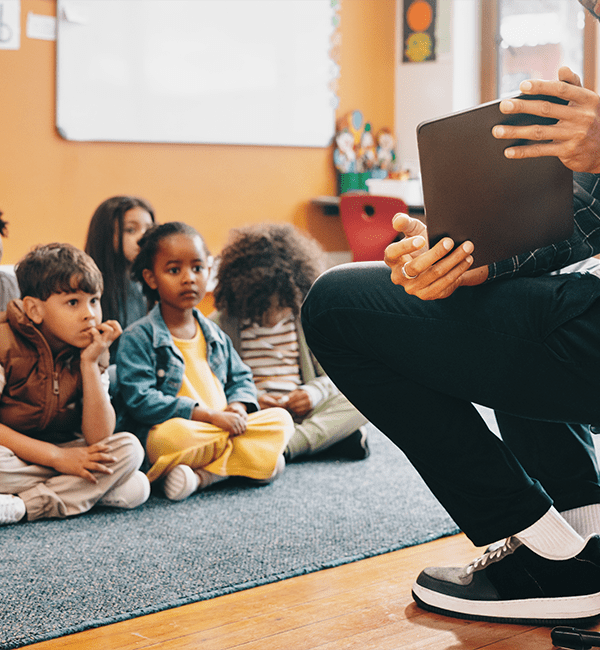The face of education is changing. Literally. Modern classrooms are becoming multicultural crossroads. From the first day of preschool and on, today’s learners are part of an increasingly diverse group. And that’s a good thing! At Erikson Institute, we passionately believe in making room for the richness of every child’s unique experiences. Valuing cultural backgrounds allows teachers to better support children’s sense of self and individual learning skills. So where do we begin? With inclusive language.
What we say has an impact. According to the American Psychological Association, “Language is powerful. It is more important than ever to use language that creates inclusive and equitable cultures.”1 Classrooms are among the first of society’s integrated cultural spaces that children encounter. The classroom is a formative place for a young mind and spirit which is why inclusive, multilingual approaches in contemporary learning spaces are not only valuable, but necessary for children to develop a sense of value and belonging.
A wealth of research shows that language is a fundamental part of human development from birth. “We must be responsive to what’s happening and meet that need,” says Sandra Osorio, PhD, Associate Professor of Raciolinguistic Justice at Erikson. Osorio also oversees Erikson’s Early Childhood Education (ECE) Triple Endorsement Program which includes endorsements for bilingual education and special education that apply an inclusive and holistic approach to education by focusing on the whole child and their cultural roots. “The number one goal is for bilingual students to feel proud about their backgrounds. How do we make sure all children feel seen? Know that they are heard? And respect diversity?”
It’s time to rethink early care and education programs. “There is a movement towards being more inclusive,” observes Luisiana Meléndez, PhD, Clinical Professor at Erikson. “Raising awareness about meeting the needs of linguistically diverse children and making informed decisions in working with them – this is a type of advocacy.” The Institute of Education Science sums it up; “Inclusive language is essential for fostering inclusiveness, belongingness, and the valuing of children in early childhood education…[and] also provide[s] genuine expectation and hope for all children.”2
More than ever, teachers with bilingual and special education training are in high demand. As early childhood classrooms continue to diversify, it is essential that teachers and educators prepare to lead multicultural, multilingual curricula to ensure that all students have equitable opportunities to learn and thrive. Erikson is proud to offer the first ECE Triple Endorsement program in Illinois, which is designed to integrate Erikson’s wealth of early childhood knowledge with key Early Childhood Education, Bi-lingual / ESL and Special Education endorsements. We are combining valuable early childhood development expertise with empowering credentials that can advance a teaching career and create more equitable and just educational systems where all children can learn and thrive.
Right now, diverse groups of young learners are ready to flourish in inclusive classrooms that embrace their uniqueness and celebrate their cultures. Erikson Institute is ready to proactively prepare you to serve them and help every student thrive and feel valued.
Learn more about the ECE Triple Endorsement program at Erikson.
Sources
1 “Why Inclusive Language Matters,” American Psychological Association, Psychology Student Network, Author: Efua Andoh, 2022 https://www.apa.org/ed/precollege/psn/2022/09/inclusive-language
2 “Inclusive Language as a Pedagogical and Motivational Tool in Early Childhood Settings: Some Observations,” Institute of Education Science, Authors: Francis R Ackah-Jr, John Appiah, Alex Kwao, 2020 https://eric.ed.gov/?id=ED607756

Join the Erikson family with monthly news + events updates shared by academics, community members, and families.